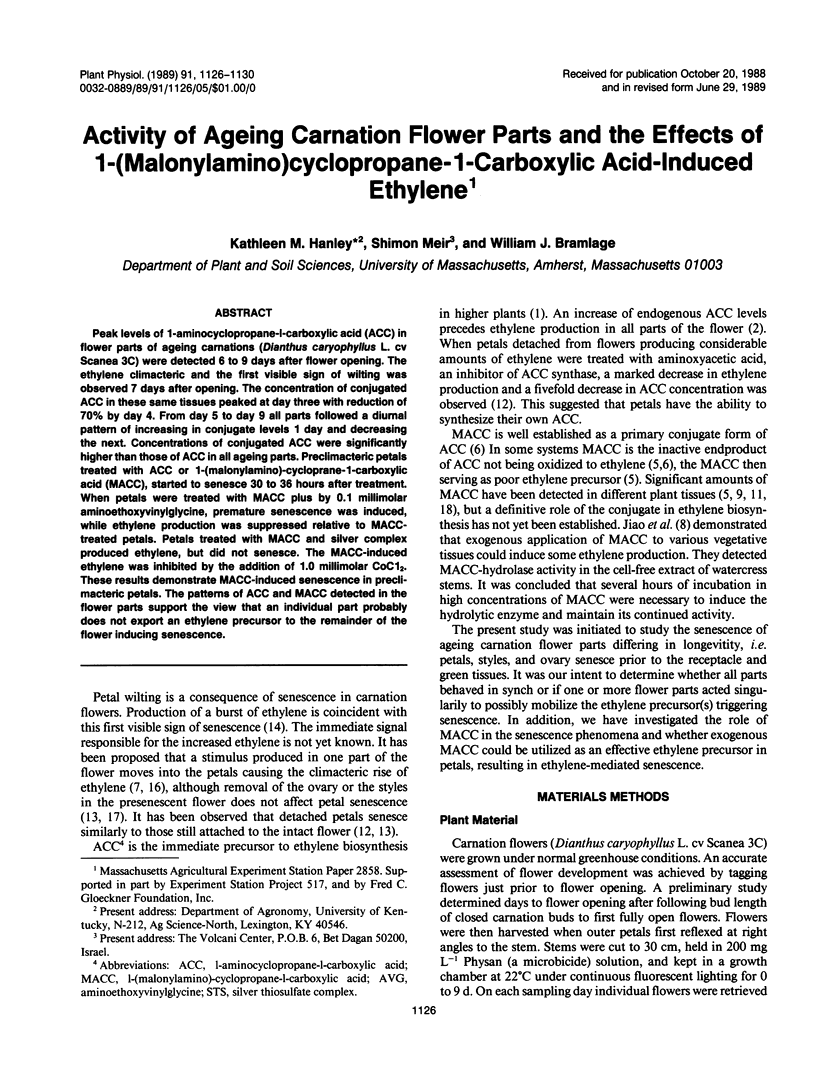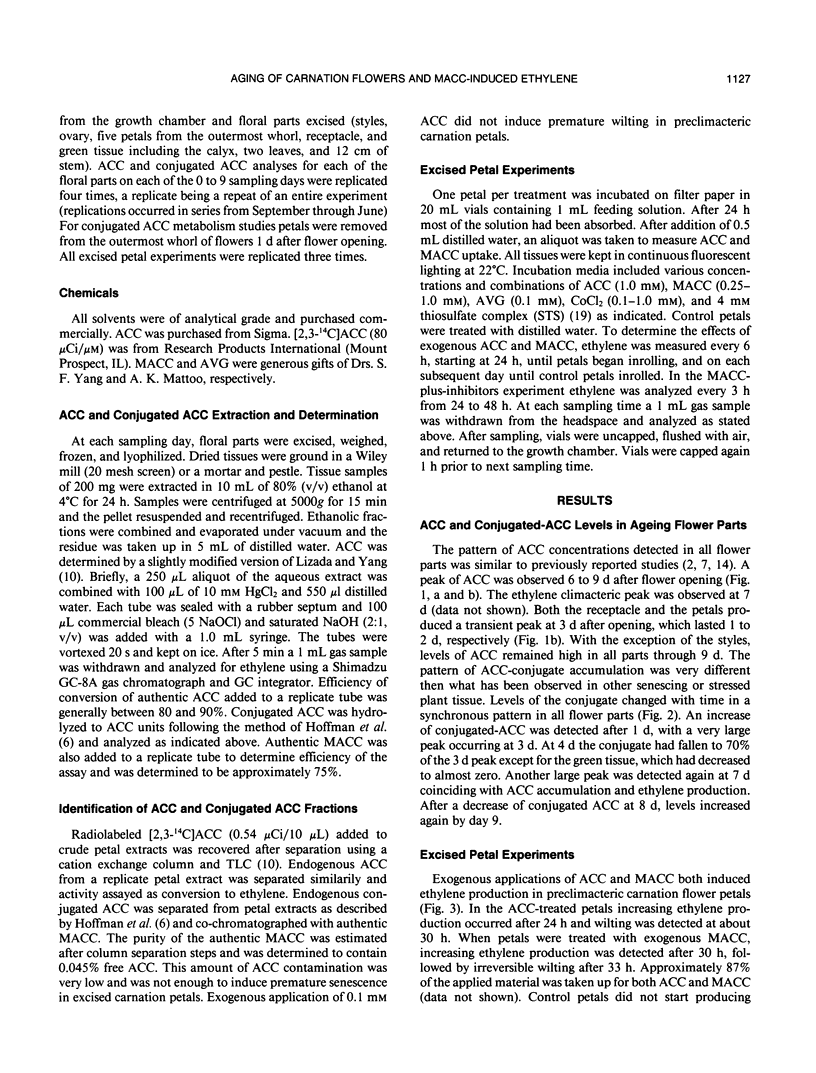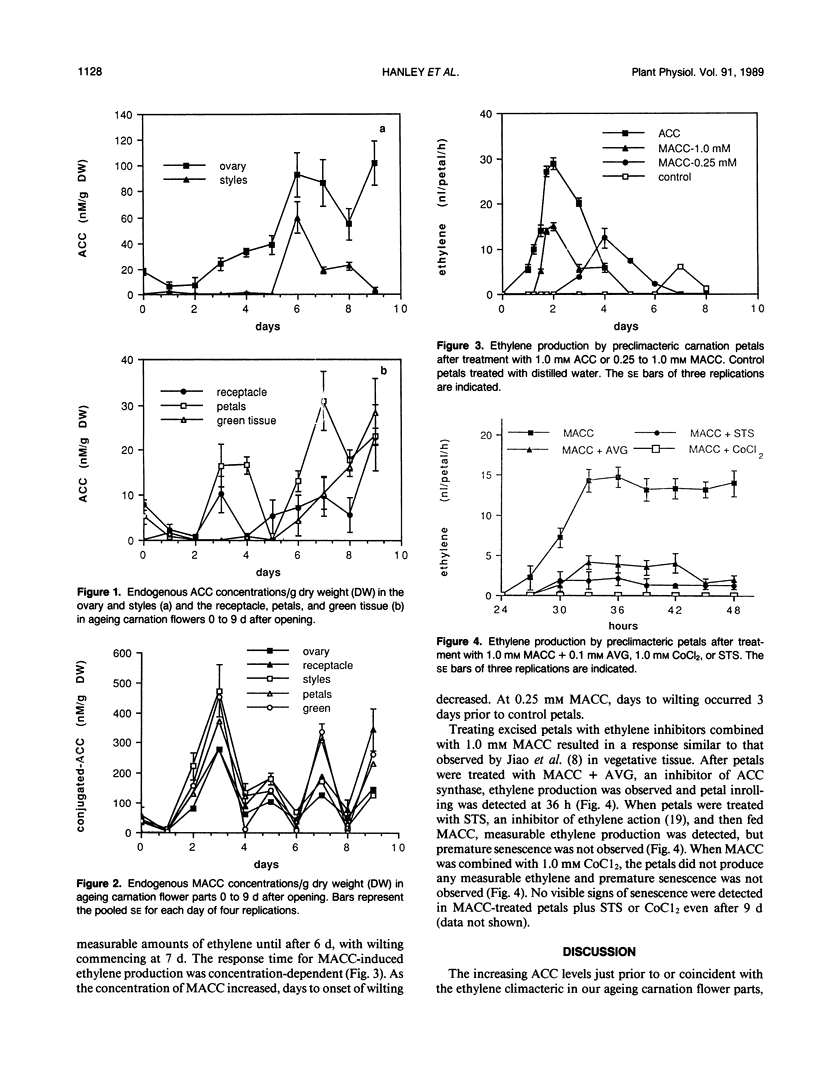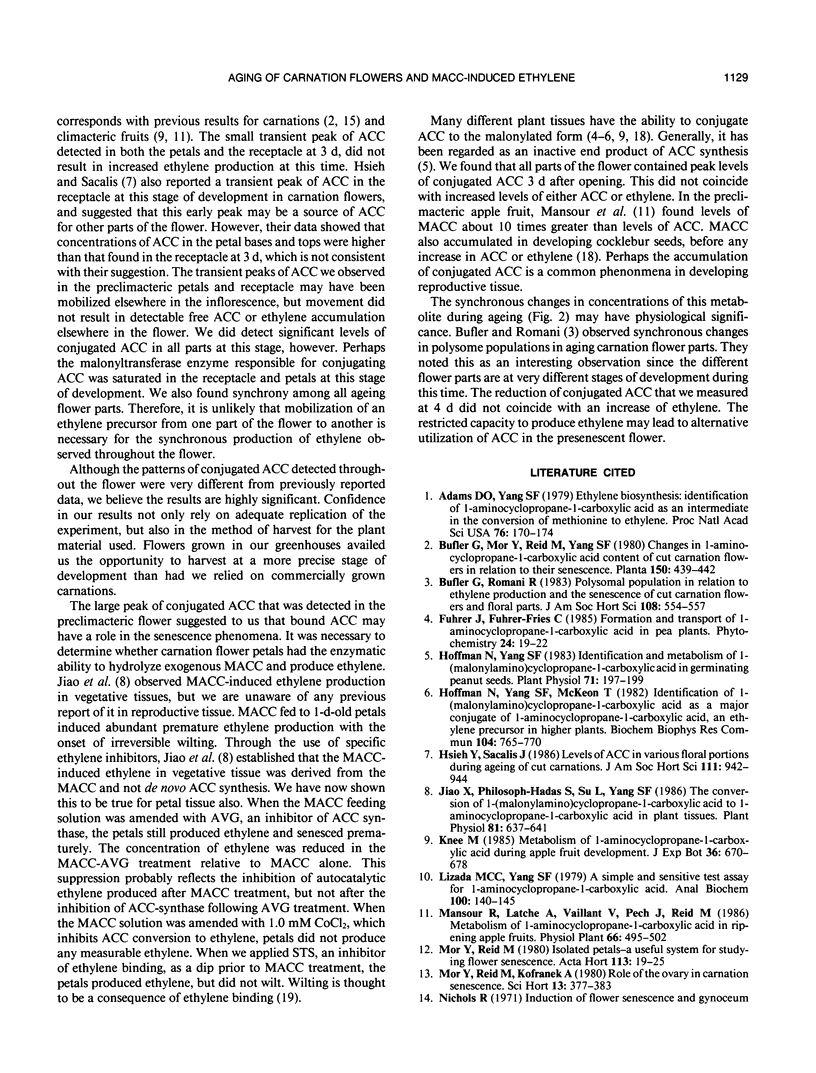Abstract
Peak levels of 1-aminocyclopropane-l-carboxylic acid (ACC) in flower parts of ageing carnations (Dianthus caryophyllus L. cv Scanea 3C) were detected 6 to 9 days after flower opening. The ethylene climacteric and the first visible sign of wilting was observed 7 days after opening. The concentration of conjugated ACC in these same tissues peaked at day three with reduction of 70% by day 4. From day 5 to day 9 all parts followed a diurnal pattern of increasing in conjugate levels 1 day and decreasing the next. Concentrations of conjugated ACC were significantly higher than those of ACC in all ageing parts. Preclimacteric petals treated with ACC or 1-(malonylamino)-cycloprane-1-carboxylic acid (MACC), started to senesce 30 to 36 hours after treatment. When petals were treated with MACC plus by 0.1 millimolar aminoethyoxyvinylglycine, premature senescence was induced, while ethylene production was suppressed relative to MACC-treated petals. Petals treated with MACC and silver complex produced ethylene, but did not senesce. The MACC-induced ethylene was inhibited by the addition of 1.0 millimolar CoC12. These results demonstrate MACC-induced senescence in preclimacteric petals. The patterns of ACC and MACC detected in the flower parts support the view that an individual part probably does not export an ethylene precursor to the remainder of the flower inducing senescence.
Full text
PDF




Selected References
These references are in PubMed. This may not be the complete list of references from this article.
- Adams D. O., Yang S. F. Ethylene biosynthesis: Identification of 1-aminocyclopropane-1-carboxylic acid as an intermediate in the conversion of methionine to ethylene. Proc Natl Acad Sci U S A. 1979 Jan;76(1):170–174. doi: 10.1073/pnas.76.1.170. [DOI] [PMC free article] [PubMed] [Google Scholar]
- Hoffman N. E., Fu J. R., Yang S. F. Identification and Metabolism of 1-(Malonylamino)cyclopropane-1-carboxylic Acid in Germinating Peanut Seeds. Plant Physiol. 1983 Jan;71(1):197–199. doi: 10.1104/pp.71.1.197. [DOI] [PMC free article] [PubMed] [Google Scholar]
- Hoffman N. E., Yang S. F., McKeon T. Identification of 1-(malonylamino) cyclopropane-1-carboxylic acid as a major conjugate of 1-aminocyclopropane-1-carboxylic acid, an ethylene precursor in higher plants. Biochem Biophys Res Commun. 1982 Jan 29;104(2):765–770. doi: 10.1016/0006-291x(82)90703-3. [DOI] [PubMed] [Google Scholar]
- Jiao X. Z., Philosoph-Hadas S., Su L. Y., Yang S. F. The Conversion of 1-(Malonylamino)cyclopropane-1-Carboxylic Acid to 1-Aminocyclopropane-1-Carboxylic Acid in Plant Tissues. Plant Physiol. 1986 Jun;81(2):637–641. doi: 10.1104/pp.81.2.637. [DOI] [PMC free article] [PubMed] [Google Scholar]
- Lizada M. C., Yang S. F. A simple and sensitive assay for 1-aminocyclopropane-1-carboxylic acid. Anal Biochem. 1979 Nov 15;100(1):140–145. doi: 10.1016/0003-2697(79)90123-4. [DOI] [PubMed] [Google Scholar]


